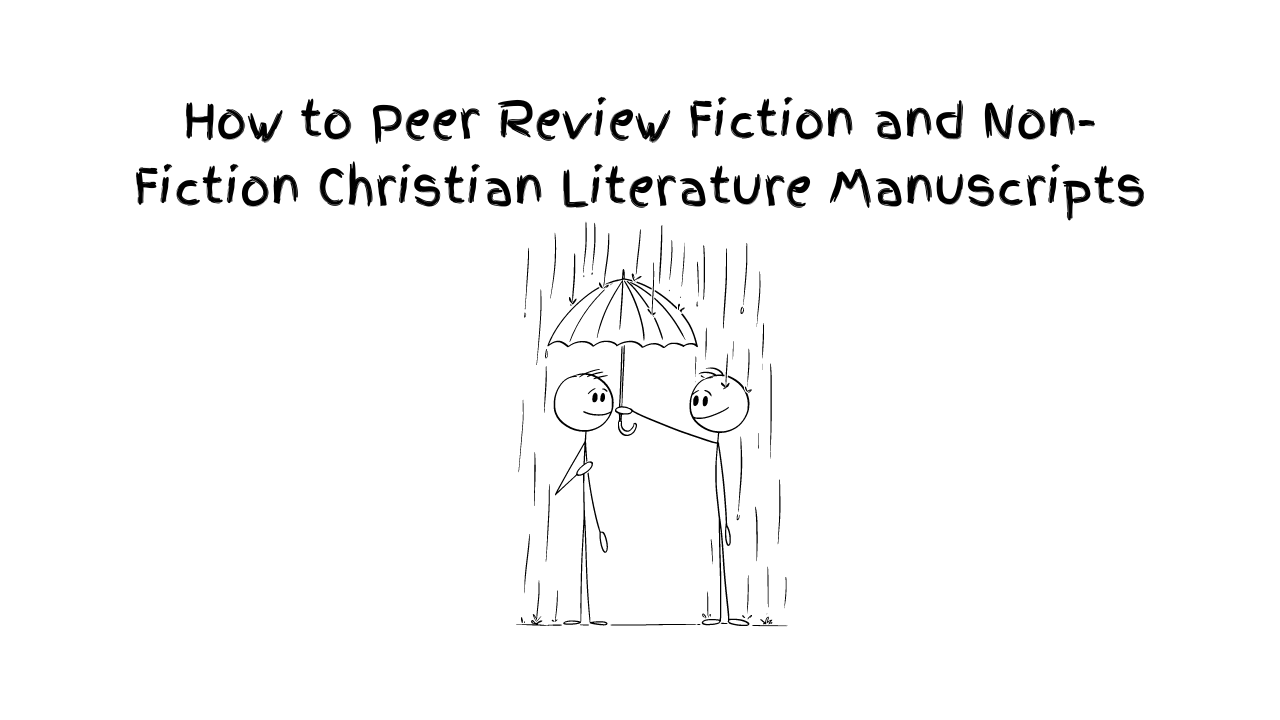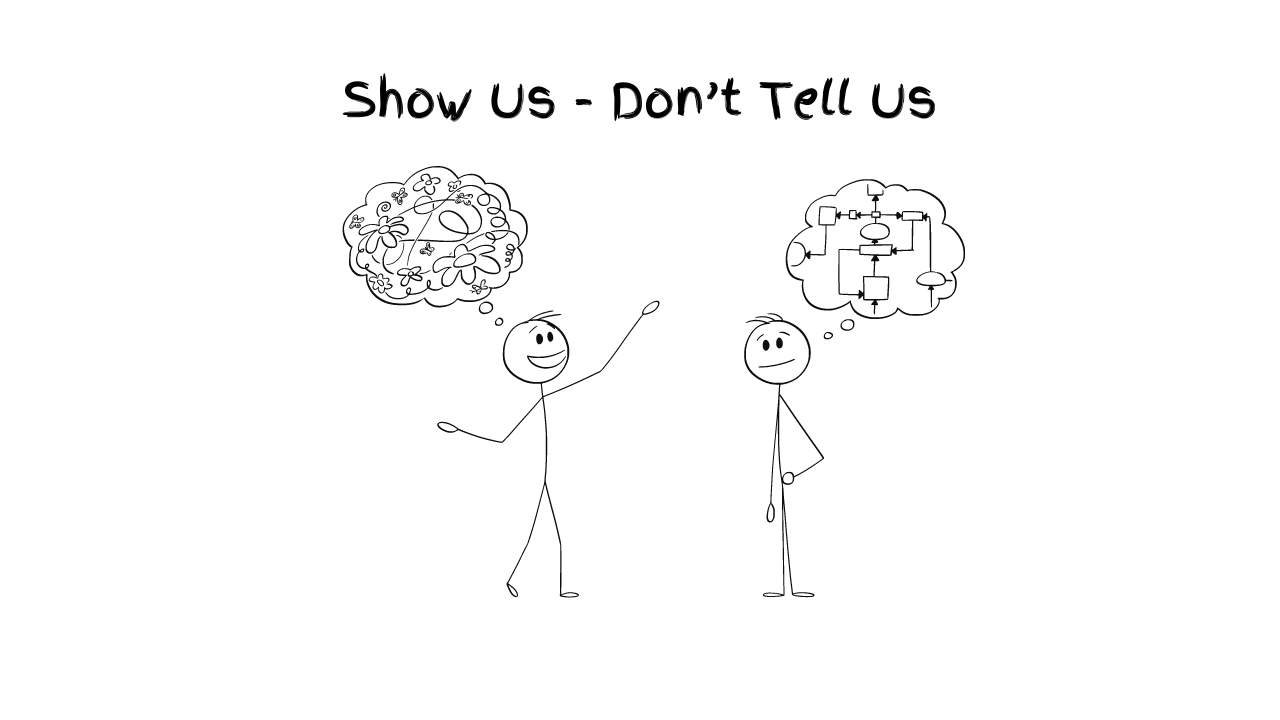This involves assessing the content, theological accuracy, writing style, and overall impact of the work.
The reviewer’s responsibilities encompass two main aspects:
In-text Commentary: The reviewer will provide in-text comments while thoroughly examining the manuscript. These comments will serve to offer real-time feedback on specific sections, concepts, or aspects encountered during the reading process.
Comprehensive Review Report: Following the thorough evaluation, the reviewer will furnish a detailed review report reflecting their overall impressions of the manuscript’s quality. This report will be structured to encompass several key components:
Strengths Assessment: An analysis highlighting the notable strengths exhibited within the manuscript. This segment will highlight exemplary features such as clear arguments, easy-to-understand explanations, originality of thought, or compelling narrative structure.
Weaknesses Identification: A close look at where the manuscript could get better. Point out things like when the arguments aren’t clear, when the story doesn’t flow smoothly, if there are mistakes in the facts, or if things don’t make sense.
By adhering to these structured guidelines, the reviewer endeavours to provide a comprehensive evaluation that highlights both commendable aspects and areas warranting refinement, thus facilitating the enhancement of the manuscript’s overall quality and efficacy.
Here are some tips for effectively peer reviewing such a manuscript:
Theology / Doctrine / Spiritual Alignment
Understand the Christian Perspective: Familiarise yourself with Christian theology, beliefs, and terminology. This understanding will help you assess the theological accuracy and coherence of the manuscript.
Evaluate Theological Soundness: Assess the theological soundness of the manuscript by examining its alignment with Christian doctrine and Scripture. Look for adherence to orthodox Christian beliefs and consistency with Biblical teachings.
Examine Scriptural Interpretation: Analyze how the author uses Scripture. Are verses quoted in context? Is the interpretation of the Scripture sound and applicable to the topic?
Examine Scriptural Interpretation: Analyse how the author interprets and applies Scripture within the manuscript. Assess the accuracy and consistency of Biblical references and whether they support the author’s arguments and conclusions. Also, verify the accuracy of Scripture citations and their application to the subject matter. Misquoting or taking verses out of context should be noted.
Christ-Centered: Evaluate whether the book glorifies Christ and reflects a Biblical worldview. Consider the author’s portrayal of Jesus, salvation, and the Christian life.
Heresy Check: Be vigilant for any signs of heretical teachings or misinterpretations that could lead readers astray.
2. Practical Application
Relevance: Consider the book’s relevance to its intended audience. Does it address real-life issues faced by Christians today?
Actionable Advice: Evaluate whether the book provides practical, biblical advice that readers can apply in their daily lives.
3. Considerations
Consider the Author’s Perspective: Understand the author’s theological perspective and the audience they are addressing. Evaluate whether the manuscript effectively communicates to its intended audience and aligns with the author’s theological stance.
Respect the Author’s Voice: Recognise and respect the author’s voice and perspective, even if you may not agree with all aspects of their theological stance. Offer feedback in a supportive and constructive manner, avoiding judgment or criticism of the author’s beliefs.
4. Technicalities/Writing Quality
Assess the Writing Style and Clarity: Evaluate the writing style for clarity, coherence, and accessibility. Consider whether the language used is appropriate for the target audience and whether complex concepts are explained clearly.
Tone: Evaluate the tone of the book. Is it pastoral, encouraging, or challenging in a way that is appropriate for the message and audience?
Grammar and Style: Note any grammatical errors, awkward phrasing, or stylistic issues that could detract from the book’s message.
Evaluate Originality and Contribution: Assess the originality of the manuscript and its contribution to Christian literature. Consider whether the work offers new insights, perspectives, or applications of Christian theology that add value to the field.
Check for Ethical Considerations: Pay attention to any ethical considerations, such as plagiarism, misrepresentation of & uncredited sources, or conflicts of interest. Ensure that the manuscript upholds ethical standards in research and writing.
Captivating and Engaging Content: Does the book engage the reader’s interest? Consider the use of anecdotes, personal stories, or illustrative examples to make the content relatable.
Interesting Challenge to the Reader: Evaluate whether the book challenges readers spiritually, prompting them to grow in their faith or to think more deeply about their beliefs.
Purpose of the Book: Understand the author’s purpose in writing the book. Is this purpose clearly communicated and fulfilled by the content?
Audience: Consider whether the book is appropriate for its intended audience, whether that be lay Christians, church leaders, or a specific demographic.
Spiritual Impact: Reflect on the potential spiritual impact of the book. Could it lead to positive change in the reader’s life?
Contribution to the Field: Assess the book’s contribution to Christian literature. Does it offer a fresh perspective, fill a gap, or provide valuable insights?
5. The Feedback
Impartiality: Review the book impartially, setting aside personal biases and focusing on the content’s adherence to Biblical truth.
Maintain Confidentiality: Treat the manuscript and its contents with confidentiality and respect. Avoid sharing information about the manuscript or your review without permission from the author or publisher.
Provide Constructive Feedback: Offer a balance of positive feedback and constructive criticism. Offer specific feedback on both the strengths and weaknesses of the manuscript. Provide constructive suggestions for improvement in areas such as theological clarity, writing style, argumentation, organisation and flow.
Encouragement and Support: In addition to providing feedback, offer words of encouragement and support to the author. Acknowledge the value of their contribution to Christian literature and express confidence in their ability to address the feedback and further strengthen their manuscript. Let the author know that your critique comes from a place of genuine care and a desire to help them succeed.
Graceful Language: Provide critiques with grace, understanding the effort and spiritual sensitivity required to write a Christian book.
6. Avoid negativity and correct in love
Correcting in love is a concept rooted in Christian teachings, particularly emphasising the importance of approaching correction or criticism with compassion, empathy, and respect. Expanding on this idea in the context of peer reviewing a fiction or non-fiction Christian literature manuscript involves several considerations:
Compassionate Critique: When providing feedback on the manuscript, it’s essential to approach areas needing improvement with compassion and empathy. Recognise that authors invest significant time, effort, and passion into their work, and critique can be challenging to receive. Frame your feedback in a way that shows understanding and empathy for the author’s perspective and intentions.
Respectful Tone: Maintain a respectful and courteous tone throughout your review. Avoid harsh or overly critical language that may come across as disrespectful or discouraging. Instead, strive to offer feedback in a manner that honors the dignity of the author and fosters a constructive dialogue.
Focus on Constructive Criticism: Instead of simply pointing out flaws or shortcomings, focus on providing constructive criticism that offers actionable suggestions for improvement. Highlight specific areas where the manuscript could be strengthened, offering practical advice or recommendations for revision. Frame your feedback in a way that encourages growth and development rather than discouragement.
Affirmation of Strengths: Alongside areas for improvement, acknowledge and affirm the manuscript’s strengths and positive aspects. Highlight what the author has done well, praising their insights, clarity of expression, or theological depth. Balancing constructive criticism with affirmations of the manuscript’s strengths can help maintain a positive and encouraging tone.
Maintain Objectivity: While it’s important to approach critique with love and compassion, it’s also crucial to maintain objectivity and honesty. Don’t shy away from addressing significant flaws or inaccuracies in the manuscript, but do so with a spirit of humility and kindness. Aim to offer feedback that is truthful and constructive, with the goal of helping the author improve their work.
Conclusion
By adhering to these principles of avoiding negativity and correcting in love, you can provide a peer review that is both constructive and compassionate, helping the author to refine their manuscript while maintaining a positive and supportive relationship.
At the end of the review, we are looking to help the writer have a superior manuscript that has theological accuracy, clarity, and contribution to the field of Christian scholarship.
Getting Started: Publishing Books
Preparing to Write/Publish
Step1: Prepare Yourself to Get Published…
Are you ready to publish your book? Here is how you need to prepare. Have your manuscript ready and explore the oprions available today. If you are stuck in getting it started or finished, there is several ways to get help. Explore and get published today! #RaisingAfricanVoices
Read MoreStep2: Let’s Talk About Publishing
The self-publishing landscape has changed considerably in the past two decades with new technologies such as the Internet, and the $1 billion markets continuing to change at a rapid pace. Increasingly, there are numerous alternatives to traditional publishing, and self-publishing is becoming the first choice for writers. #RaisingAfricanVoices
Read MoreStep3: Factors to Consider Before Self Publishing
Jesus, while talking to the disciples about following Him, asked them to count the cost. The same Scripture applies to authors today - you have to count the cost from the beginning to ensure you don't stop at some point in your book project's journey. #RaisingAfricanVoices
Read MoreStep4a: Requirements for Self Publishing
Are you ready to be published? Use our 4 points check list and tick 'Published Author' box so you can move on to the next God-given assignment... #RaisingAfricanVoices
Read MoreStep4b: Publishing Steps – Review
Is your manuscript due for a review towards getting published? The major focus during manuscript review is the general quality of the book. It is important to establish the overall completeness, scope and readership of the manuscript and whether the presentation and accessibility of the book is suitable. #RaisingAfricanVoices
Read MoreElementary Skills: Publishing Books
How to Write
5a: How to Write a Book Dedication
A book dedication is a way for you, the author to bestow a high honor on a person (or a group of people) you wish to praise or otherwise spotlight. This dedication note is often short and usually focused on one person (or a specific group of people). It’s supposed to be personal, rather than professional. It goes on the dedication page, which is in the very front of the book, after the title page. Here's how to write one. #RaisingAfricanVoices
Read More5b: How to Write a Book’s Foreword
A well-written foreword can function as the ultimate third-party recommendation or endorsement for your book, generating interest and helping when it’s time to market your book. Here’s how to write one. #RaisingAfricanVoices
Read More5c: How to Write a Book Introduction
Are you stuck on writing your book introduction? Here's how to... Hook the reader right from the beginning with a personal story from your life, a funny story, a joke, or just an interesting fact that causes him/her to want to continue reading. Here’s how to write one. #RaisingAfricanVoices
Read More5d: How to Write a Book’s Conclusion
If your readers are in the conclusion chapter, it also means they read the whole book, they liked it, and now they want you to wrap it up. So don’t rash it. Give them what they want. Here’s how to write one. #RaisingAfricanVoices
Read More5e: How to Write an Author’s Bio
People are looking for reasons why they should spend their time reading what you have written. You need to instill confidence in your readers that you are knowledgeable on the subject matter by writing an appropriate bio. Here's how to write one. #RaisingAfricanVoices
Read More5f: How to Write a Book’s Blurb
A blurb is a short yet descriptive account of the book that goes on the back cover or within the book sleeve of a hardcover book. It includes any information that represents the book best and intrigues the readers and shoppers to pick the book off the shelves. Here's how to write one. #RaisingAfricanVoices
Read More5g: How to Write an Acknowledgment
An acknowledgment section in a book provides the space to go into lenghty details in thanking the people who were sources of inspiration and support for your book and life. Here'show to write one. #RaisingAfricanVoices
Read More5h: How to Write a Table of Contents
A table of content shows the things that are held or included in something. In the book industry, it is a list of the chapters or sections given at the front of a book or periodical. Here's how to write one. #RaisingAfricanVoices
Read MoreTechnical Skills: Publishing Books
Refining Your Manuscript
6a: How to Write a Devotional
A devotional book is a literary work designed to provide spiritual inspiration, guidance, and reflection for readers seeking to deepen their faith and relationship with God. Get started here. #RaisingAfricanVoices
Read More6b: How to Write a Captivating Novel
A great novel is a complex interplay of various elements, but some key components often contribute to its greatness. Get started here. #RaisingAfricanVoices
Read More6c: How to Use Dialogue in Story Writing
Effective dialogue is characterized by authenticity, clarity, and relevance to the story. It should sound natural and believable, reflecting the unique voices and perspectives of the characters. Dialogue tags, such as "said," "asked," and "replied," help identify speakers and maintain clarity in conversations. Get started here. #RaisingAfricanVoices
Read More6d: How to Use ‘Show Don’t Tell’ in Story Writing
"Show don't tell" is a fundamental principle in storytelling that encourages writers to use descriptive language, actions, dialogue and scenes to reveal information to the reader, rather than simply telling them outright. Get started here. #RaisingAfricanVoices
Read More6e: How to Elevate a Non-fiction Christian Book to Make it Personal and Engaging
Transforming a flat non-fiction Christian book into an engaging and impactful read requires authenticity and connection. Share your personal testimony, use relatable real-life examples, and offer practical applications to make your message resonate. Being vulnerable about your faith journey fosters trust, while reflective questions and actionable steps encourage readers to apply the lessons to their own lives. Get started here. #RaisingAfricanVoices
Read More6f: How to Ethically Use Other People’s Public Stories in a Non-fiction Christian Book
Using public stories in your Christian book requires integrity and respect for the individuals involved. Always seek permission where possible, give proper attribution, and ensure the story aligns with your message while preserving the dignity of those featured. Avoid embellishment or distortion for dramatic effect, and focus on presenting truth with grace. By handling stories ethically, you honour both the subjects and your readers while maintaining your credibility as a Christian author. Get started here. #RaisingAfricanVoices
Read More6g: How to overcome the challenge of mixed languages in writing a manuscript
Writing a manuscript with mixed languages can be both enriching and challenging. To overcome this, establish clear guidelines for when and how to incorporate multiple languages. Use translations sparingly and only where necessary, ensuring they don’t disrupt the reader’s flow. Consider adding footnotes or a glossary for clarity and consistency. Tools like professional editors and language experts can help refine your manuscript while maintaining cultural authenticity. Get started here. #RaisingAfricanVoices
Read More6h: How to Peer Review Fiction and Non-Fiction Christian Literature Manuscripts
Peer reviewing Christian literature requires a thoughtful approach to ensure the manuscript aligns with Biblical principles while engaging readers effectively. For fiction, focus on character development, plot consistency, and spiritual themes. For non-fiction, assess clarity, theological accuracy, and practical application. Provide constructive feedback, highlighting strengths and offering actionable suggestions for improvement. A thorough peer review not only refines the manuscript but also upholds its spiritual impact. Get started here. #RaisingAfricanVoices
Read More6i: How to Ensure Diversity and Inclusion in Christian Writing
By embracing diverse voices, ensuring equitable access for underrepresented authors, and encouraging inclusive storytelling, authors and publishers can reflect the richness of God's Kingdom. This includes actionable strategies to amplify marginalized voices, promote cultural representation, and create a more inclusive literary ecosystem. With initiatives like multilingual publishing, fair contracting, and global partnerships, CLC Kenya leads the way in advancing DEI while staying true to Biblical principles. Get started here. #RaisingAfricanVoices
Read MoreAdvanced Skills: Publishing Books
Going the Extra Mile
7a: Should a Non-Fiction Book Have a Subtitle?
A subtitle is a powerful tool for non-fiction books, offering clarity and appeal to potential readers. It provides additional context about the book's content, target audience, and benefits, helping it stand out in searches and on bookshelves. A well-crafted subtitle enhances discoverability, boosts SEO, and communicates your book's value in just a few words. Learn More Here. #RaisingAfricanVoices
Read More7b: Why Organising Your Non-Fiction Into Chapters Is Important
Organising your non-fiction book into clear, well-structured chapters enhances readability, engagement, and comprehension for your audience. Chapters create a logical flow, making complex ideas easier to digest while guiding readers through your message step by step. A structured layout also improves your book's professional appeal and allows readers to quickly locate topics of interest. Learn More Here. #RaisingAfricanVoices
Read More7c: Why Self-Edit Your Book Before Submitting it for Publishing?
Self-editing is a crucial step before submitting your manuscript for publishing. It allows you to refine your ideas, correct errors, and enhance the overall quality of your work. A well-edited manuscript not only demonstrates professionalism but also makes the publishing process smoother and more efficient. From grammar to flow and consistency, self-editing ensures your book is the best version of itself before reaching an editor's desk. Learn More Here. #RaisingAfricanVoices
Read More7d: The Art of the Author Photo: Essential Specs for a Professional and Polished Image
Professional photos on a book’s back page play a crucial role in an author’s branding and marketing strategy. Learn More Here. #RaisingAfricanVoices
Read MoreContractual Skills: Publishing Books
Be Informed (Not Legal Advice)
8a: Why Every Author Needs a Non-Disclosure Agreement (NDA)
Protect your intellectual property with a Non-Disclosure Agreement (NDA) in publishing! An NDA safeguards your manuscripts and creative ideas by establishing confidentiality between authors, publishers, and editors. It ensures your work isn't misused, offers legal protection, and secures your publishing journey. Learn how to prevent unauthorized use of your content, why documentation is essential, and how trusted publishers like CLC Kenya provide sample NDAs to keep your work safe. Don't let your hard work go unprotected—explore the importance of NDAs today! Here’s what you need to know. #RaisingAfricanVoices
Read More8b: What to Include in the Copyright Page and Complete the Copyrighting Process
Copyright law gives creators of original material the exclusive right to further use and duplicate that material for a given amount of time, at which point the copyrighted item becomes public domain. Here's what you need to know. #RaisingAfricanVoices
Read More8c: Terms and Conditions for Traditional Publishing/Adapting Existing Books into Other Versions
Adapting existing books into new versions, such as translations, audiobooks, or special editions, requires clear terms and conditions in traditional publishing agreements. These terms outline rights, royalties, and responsibilities for both the author and publisher, ensuring a smooth adaptation process. Properly defined agreements protect the integrity of the original work while maximising its reach and impact across different formats. Here’s what you need to know. #RaisingAfricanVoices
Read More8d: How to Publish a Book with Multiple Stakeholders: Best Practices for Rights Ownership, Expenses and Recognition
Publishing a book with multiple stakeholders requires clear communication and well-defined agreements to ensure smooth collaboration. Establish ownership rights, allocate expenses transparently, and outline recognition for each contributor's role. Best practices include drafting detailed contracts, maintaining open communication, and resolving disputes amicably. These steps protect relationships while ensuring the book's success. Here’s what you need to know. #RaisingAfricanVoices
Read More8e: How to Get ISBN in Kenya and Other African Countries
Publishing a book with multiple stakeholders requires clear communication and well-defined agreements to ensure smooth collaboration. Establish ownership rights, allocate expenses transparently, and outline recognition for each contributor's role. Best practices include drafting detailed contracts, maintaining open communication, and resolving disputes amicably. These steps protect relationships while ensuring the book's success. Here’s what you need to know. #RaisingAfricanVoices
Read MoreSubscribe for wholesome content!
































